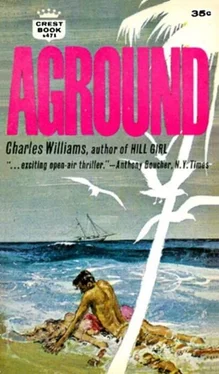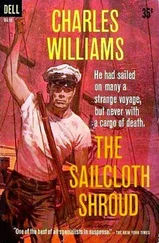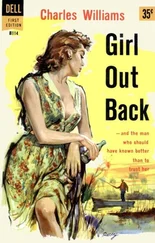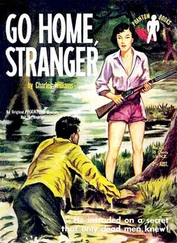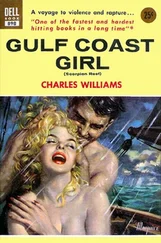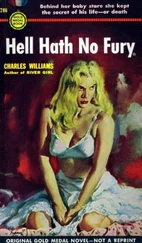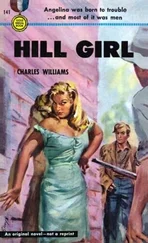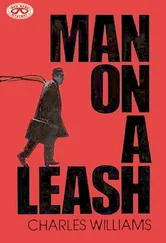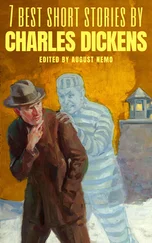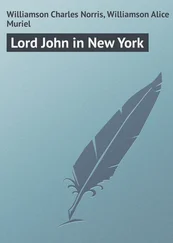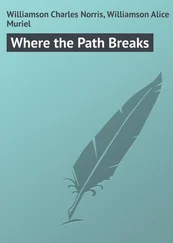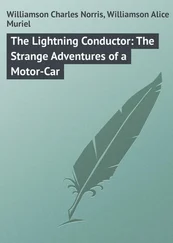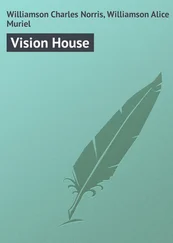“What is it?” she asked.
“Scope-sighted deal,” he explained. “Apparently some of those were either sniper’s rifles or sporting guns.”
“That’s bad, I take it?”
“Not particularly, but I’d have been just as happy with something a little less specialized.” He was thinking of having to take that kedge anchor out; it was beginning to look considerably less simple. Morrison could shoot, and he had something to shoot with.
She looked at him curiously. “You sound like another gun expert. Were you one of those jungle commandos too?”
He shook his head. “I was in the Navy. I never shot a rifle during the whole war, except in boot camp. But I used to do a lot of hunting.”
“Where?”
“Texas, and Sonora, when I was a boy.”
“Where are you from?”
“Corpus Christi. My father was a bar pilot there.”
She looked around musingly. “You don’t suppose this might set a new record of some sort for the places Texans run into each other?”
“I doubt it. But I’d better get to work.”
“What can I do?” she asked.
“Nothing at the moment. Just stay back and keep down.” He went below and began shoving the heavy wooden cases up the ladder. When he had several in the cockpit, he came up, lifted them onto the deck on the port side, and shoved them overboard. There was something very satisfying in the splash they made; he was sick to death of Morrison and his damned guns. It was a long, hard job, and he was winded and drenched with sweat as he took a last look around the cabin where nothing remained now of its late cargo but the confused litter of rope. He went above and shoved the last ones overboard, and looked at his watch. It was 3:40. Glancing out across the water, he noted the incoming tide had slowed now; it should be slack high in a little over an hour. He wiped sweat from his face. “So much for that.”
Rae Osborne indicated the five cases of ammunition still lined up along the port rail near the break of the deckhouse. “How about those?”
Ingram shook his head. “We keep them for the time being. They’re our hole card, in case this other stuff doesn’t work.”
“I feel useless, letting you do everything.”
“I’ll have something for you in a minute. In the meantime, whenever Morrison gets quiet over there, check him with the glasses.”
“You think he might try to swim out?”
“I don’t think he will in daylight, but we can’t take any chances. Keep your head low.”
Ducking down the ladder again, he went forward to the locker beyond the crew’s quarters and dug out an anchor. It was a standard type, with a ten-foot section of heavy chain shackled to the ring; it would do nicely. He carried it aft and came back for a heavy coil of nylon anchor warp. While he was getting this out, he came across a pair of four-sheave blocks and a coil of smaller line he could use for a tackle. He grunted with satisfaction; it would be better than the main sheet to haul with. Trying to use the Dragoon’s anchor windlass up there on the exposed fore-deck would be sheer suicide. Morrison would have a clear shot at him with that scope-sighted rifle. He carried it all aft and dumped it in the cockpit. At the same time Morrison cut loose with a string of four shots as if he were practicing rapid fire. One of them struck the side of the mainmast and ricocheted with the whine of an angry and lethal insect.
Rae Osborne watched with rapt interest as he wedged the anchor’s stock and bent the nylon warp to the ring at the end of the chain. “Where does it go?” she asked.
He nodded astern. “Straight aft as far as I can get it.”
“But how do you take it out there?”
“Walk and carry it.”
She grinned. “So you ask a silly question—”
“No, that’s right. I’ll admit it’s not quite the standard procedure, but it’s about all we’ve got left. That’s what I wanted the diving mask for.”
“But how about breathing?”
“That’s easy. The water’s not over seven or eight feet deep until I hit the channel, and then it’s not over twelve.”
“What about Morrison and that rifle?”
“No problem,” he said, wishing he felt as confident about it as he was trying to sound. He lowered the anchor over the side and arranged the coil of line in the bottom of the cockpit. “You pay it out. And when you get within twenty or thirty feet of the end, hang on.”
She nodded. “Roger.”
He took the automatic out of his belt and put it on the seat beside her. “You know how to operate the safety on this?”
“No. I don’t know anything about guns at all.”
He showed her. “That’s all there is to it, besides pulling the trigger. If Morrison should make it out here and get aboard, kill him. None of this TV routine of pointing it at him and trying to impress him. Put it in the middle of his chest and empty the clip.”
She looked apprehensive. “I think I get the message. All this is just in case you don’t come back? Is this anchor really necessary?”
“Absolutely. But there’s no danger. I’m just covering all bases.”
“All right. Anything else?”
“That’s all, except looking the other way till I get in the water.”
She turned away while he stripped down to his shorts and dropped over the side with the mask. Adjusting the latter, he went under. Some of the boxes he had thrown overboard were piled up almost to the surface under the schooner’s side. He pulled them down so the schooner wouldn’t fall over against them on the next low tide in the event they didn’t get off this time. There was no hull damage, at least on this side. Her keel was stuck in the bottom—just how far, he couldn’t be sure. A lot would depend on what kind of tide they got this time. He surfaced for another breath, and Rae Osborne was leaning across the deck looking down at him. “Be careful,” she said. He nodded, went under, and picked up the anchor.
It was still heavy, even submerged, but the weight held his feet firmly against the bottom so he had no difficulty walking. He noted with satisfaction that the water was slightly deeper astern; once they got her back as far as twelve or fifteen feet, they’d have it made. He walked bent over and leaning forward to cut down the water’s resistance. He turned and looked back. The water was as transparent as air; he was going straight, and the line was paying out beautifully. He was about thirty feet past the stern now. Dropping the anchor, but holding a bight of the line in his hand, he let himself rise until his face broke the surface, took a quick breath, and pulled down against the weight of the anchor and its chain. He picked it up and went on.
The bottom so far was all sand, with patches of grass. There were numbers of conchs scattered about in the grass, and once he saw a leopard ray and a small barracuda. The current was beginning to bother him now as he got more line out. The schooner was fading out behind him, and it was harder to keep in a straight line. He surfaced again.
Nothing happened. Morrison still hadn’t seen him. The bottom sloped downward. He was going down into the channel, in water ten to twelve feet deep. Just before the schooner disappeared completely behind him, he picked out an isolated clump of grass ahead for a landmark. The going was harder now; it was backbreaking work pulling the line. He surfaced again, and just as he sucked in his breath and went under, something exploded against the water off to his left like the slap of a canoe paddle. He felt a little chill of apprehension. Morrison had located him at last.
The next time he surfaced, the explosion was nearer, and the third time he barely had his head under when the bullet struck and ricocheted off the surface so close to him he could feel the impact in the water. Nobody could sight and shoot that fast; Morrison was tracking him. He had his course figured out, and how far he was going each time, and was waiting. Well, he could solve that. He picked up the anchor, but this time, instead of plowing on until he was out of breath, he stopped after three steps and began pulling the line toward him and gathering it in coils. When he surfaced, he was twenty feet short of where Morrison was expecting him. When he went down again he was able to make a fast thirty feet with the coiled slack line he had. Both times, the shots were wide.
Читать дальше
